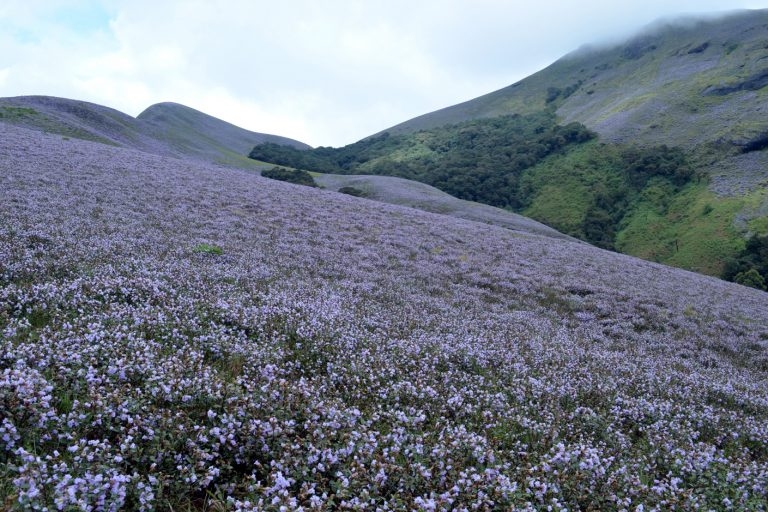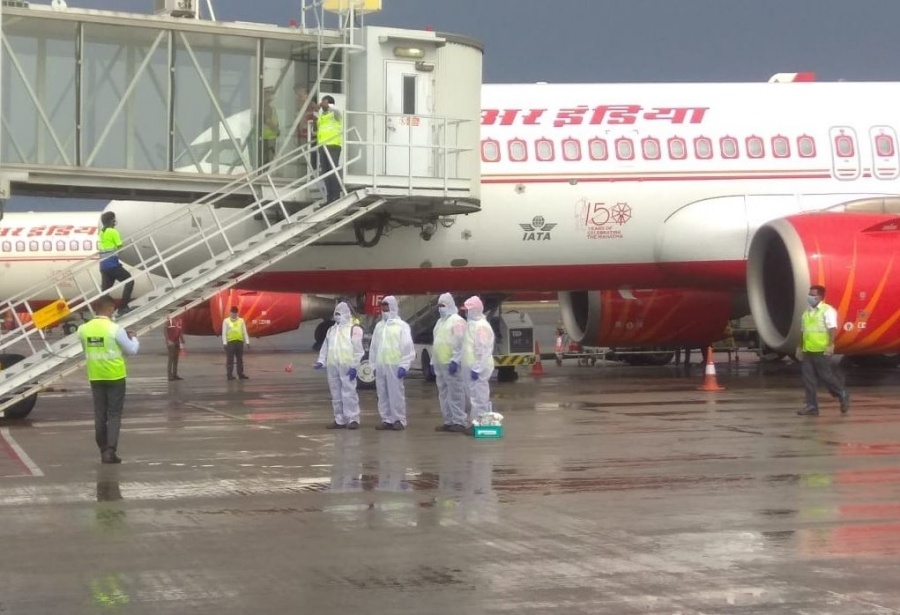Starting late July, the Anamalai hills near Munnar in Kerala will be resplendent, clad in a purplish blue carpet. The famed neelakurinji (Strobilanthes kunthiana) will burst into flower – a phenomenon that occurs once in 12 years. Hundreds of thousands of visitors are expected to flock to the Munnar hills to behold the spectacle that lasts up until October…reports Asian Lite News

Munnar is home to the highest concentration of neelakurinji plants in the country – spread over 3,000 hectares of rolling hills. Each shrub reproduces once in its life time and dies after flowering. It takes another 12 years for the seeds to sprout again and grow up to 30 to 60 centimetres high, for another glorious bloom.
The neelakurinji belongs to the genus Strobilanthes, which is a tropical plant species found in Asia and Australia. There are about 450 species of Strobilanthes in the world, of which 146 are found in India and of them, about 43, in Kerala.
The blooming of neelakurunji this year has ensured the fourth most important place for the Western Ghats in the Lonely Planet’s 2018 Best in Asia.
According to Prasad Ambattu, a journalist and a resident of Munnar, there are two 12-year cycles simultaneously going on in the Anamalai hills. In one cycle, the last neelakurinji bloom was in 2006 and the next one is now, in 2018. In the other cycle, the last bloom was in 2014.
The mass flowering neelakurinji provides a feast for butterflies, honeybees and other insects. The purple flowers hold a large amount of nectar, which especially attract the eastern honeybee (Apis cerana).
“This honey from the neelakurinji is very special. It lasts for about 15 years without getting spoilt,” said G. Rajkumar, chief coordinator of the NGO Save Kurinji Campaign Council. He added that the honey is supposed to have medicinal properties.
Rajkumar also said that the ecosystem that supports the kurinji plants plays a major role in bringing water to the Amaravati river which is a tributary of the Kaveri river, a main water source for Tamil Nadu. “The Kurinji reserve is in the catchment area of Amaravati river,” he said.
The tourist boom begins
The forest department expects a large number of tourists to arrive in Munnar during this season, said Lekshmi Rajeshwari, forest range officer at Devikulam, which is part of the Eravikulam National Park, the prime destination where neelakurinji will bloom.
“One million tourists, including travellers from Europe and the United States, are expected to visit this amazing place this year,” she said.
Last October, Kerala Chief Minister Pinarayi Vijayan had communicated through a social media post that around eight lakh (0.8 million) tourists are expected for the bloom season and the state government aims to introduce a series of measures to protect the Eravikulam National Park. As an unprecedented number of tourists will visit the region, the government plans to restrict the numbers entering the park and the amount of time they spend there, said Vijayan’s post. Action on waste management and required tourist facilities are to be in place to safeguard the national park.
Encroachment on the neelakuri habitats
The Kurinjimala Sanctuary was declared in 2006, during the previous mass flowering to protecting the neelakurinji and its habitat. “This sanctuary gives the rarest, most spectacular view of neelakurinji,” said G. Baburaj, an environmentalist. “But it is eyed by many,” he added, elaborating that the area is being encroached on by resorts, hotels, plantations and small farms.
To put an end to the encroachments, the Kerala government passed an ordinance in 2006, for protecting the Kurinjimala Sanctuary. Since a number of settlements came under the area in the sanctuary, which was raising a stir among locals, the government, in the ordinance, authorised a sub-collector to adjudicate land claims after hearing complaints.
The proposed land that came under this ordinance included 2,041 houses, more than 53 government offices, 12 schools, 62 temples, churches and even banks. There were allegations against local politicians for forging title deeds of land ownership in the areas declared as protected.
However, for Kurinjimala to be declared as a wildlife sanctuary permanently under the Wildlife Protection Act of 1972, there is need for the settlement officer (in this case the Devikulam sub-collector) to go through the settlement of rights process for those who have inhabited or have rights over the land. This has now happened.
In November 2017, the Kerala Government decided to redraw the boundaries of the Kurinjimala Sanctuary – a move which had invited criticism alleging that it was to support the encroachers.
Following the controversy, Pinarayi Vijayan had promised that the reserve’s area will not be reduced at any cost. He told media representatives that a committee will be formed to study the issues at the reserve and it will look in to the settlement concerns.
There is also a case pending in the Kerala High Court, demanding a Central Bureau of Investigation (CBI) enquiry into the involvement of the local member of Parliament in fabricating documents for the land. Similarly, there are hundreds of such encroachments in the reserve, claims environmentalist G. Baburaj.
Protection for neelakurinji habitat finally declared
Now, in the latest decision as of April 2018, the Kerala cabinet has decided to ensure that the proposed Neelakurinji Sanctuary will have a minimum of 3,200 hectares. Though the cabinet had decided not to evict people with title deeds, it plans to redraw the boundaries in cooperation with the revenue department.
The cabinet decision includes appointing a settlement officer, conducting drone-based survey to identify the forest land and amending The Kerala Promotion of Tree Growth In Non-Forest Areas Act 2005 to prevent growing acacia and eucalyptus in the reserve forest area, all meant to benefit the Kurinjimala Sanctuary.








